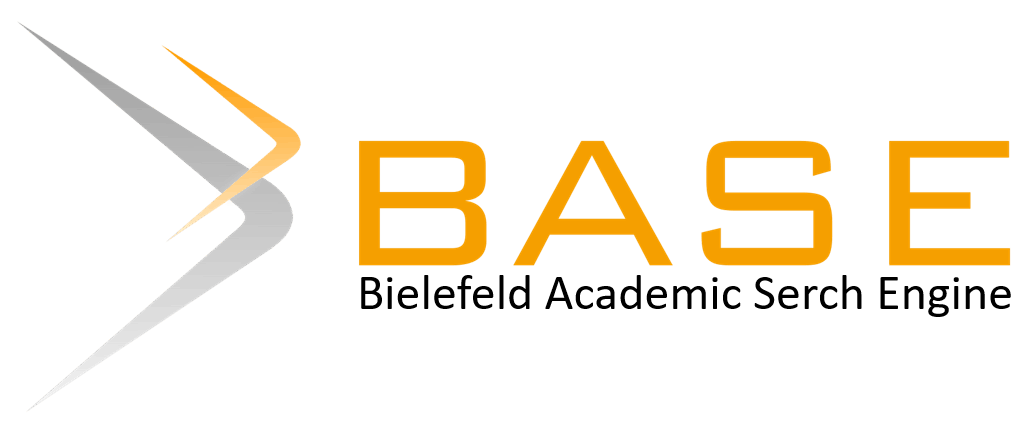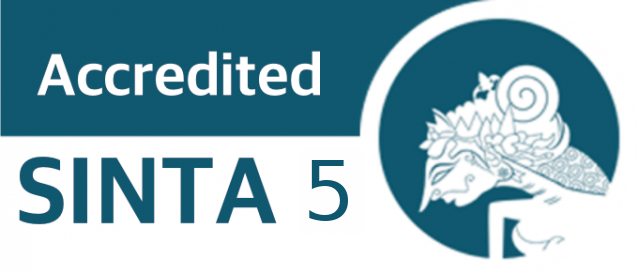Potensi Curcumin dan 4 Herbal Empon-Empon Dalam Memodulasi Kekebalan Sel T Terhadap Covid-19
DOI:
https://doi.org/10.30595/hmj.v4i3.10209Keywords:
Covid-19, SARS-CoV-2, sel T, curcumin, empon-emponAbstract
Longer immunity to Severe Acute Respiratory Syndrome-CoronaVirus-2 (SARS-CoV-2) infection is thought to occur through memory cellular responses by activity of specific T lymphocytes. However, most patients with Coronavirus disease-19 (Covid-19) experienced a decrease in the number of T lymphocytes or lymphopenia. Agents that help maintain T cell counts such as Curcumin appear to have played an important role during the Covid-19 pandemic. Curcumin is known to provide a balance between T cell effectiveness and T cell autoaggressiveness, as well as restoring memory T cell function as observed in tumor-induced mice. The mixture of 4 herbal extracts of empon-empon which is commonly used as herbal medicine, namely temulawak, ginger, lemongrass, and turmeric, is thought to have the same effect as curcumin. This is known from the tracing of a plant-protein-compound database which shows that there are not many compounds other than curcumin that can modulate T cells. It is necessary to study the role of Curcumin and a mixture of 4 herbal empon-empon in modulating T cells in cases of infection by the SARS-Cov-2 antigen.
References
1. Le Bert, N. et al. SARS-CoV-2-specific T cell immunity in cases of COVID-19 and SARS, and uninfected controls. Nature. 2020;584(7821): 457–462.
2. Zuo J, Dowell AC, Pearce H, et al. Robust SARS-CoV-2-specific T cell immunity is maintained at 6 months following primary infection [published online ahead of print, 2021 Mar 5]. Nat Immunol. 2021;10.1038/s41590-021-00902-8.
3. Zhao J, Alshukairi AN, Baharoon SA, et al. Recovery from the Middle East respiratory syndrome is associated with antibody and T-cell responses. Sci Immunol. 2017;2(14):eaan5393.
4. Birch CJ, et al. Human coronavirus OC43 causes influenza-like illness in residents and staff of aged-care facilities in Melbourne, Australia. Epidemiol Infect.2005;133(2):273-277.
5. Setyawati V, et al. Deteksi Virus Penyebab Infeksi Saluran Pernafasan Akut di Rumah Sakit (Studi Pendahuluan dengan Uji Fast-Track® Diagnostik). Media Litbangkes. 2018;28(4);257–262
6. Avendaño-Ortiz J, Lozano-RodrÃguez R, MartÃn-Quirós A, et al. Proteins from SARS-CoV-2 reduce T cell proliferation: A mirror image of sepsis. Heliyon. 2020;6(12):e05635.
7. Hammond T, Lee S, Watson MW, et al. Toll-like receptor (TLR) expression on CD4+ and CD8+ T-cells in patients chronically infected with hepatitis C virus. Cell Immunol. 2010;264(2):150-155.
8. Bhattacharyya S, Md Sakib Hossain D, Mohanty S, et al. Curcumin reverses T cell-mediated adaptive immune dysfunctions in tumor-bearing hosts. Cell Mol Immunol. 2010;7(4):306-315.
9. Yustinianus RR, et al. Curcumin Content in Extract of some Rhizomes from Zingiberaceae Family. JPMS 2019;4(1):15-19
10. Kulip J, Nawan CST, Vairappan CS, and Jaumin B. Ethnobotanical and Phytochemical Studies on Indigenous Zingiber spp. (Zingiberaceae) from Tambunan District, Sabah, Borneo, Malaysia. Nat Prod Chem Res. 2020;8(3):374
11. Kliem C, Merling A, Giaisi M, Köhler R, Krammer PH, Li-Weber M. Curcumin suppresses T cell activation by blocking Ca2+ mobilization and nuclear factor of activated T cells (NFAT) activation. J Biol Chem. 2012;287(13):10200-10209.
12. Chai, J.G., S.A. Xue, D. Coe, C. Addey, I. Bartok, D. Scott, E. Simpson, H.J. Stauss, S. Hori, S. Sakaguchi, J. Dyson. Regulatory T cells, derived from naive CD4+ CD25− T cells by in vitro Foxp3 gene transfer, can induce transplantation tolerance. Transplantation. 2005; 79:1310–1316.
13. Nishimura, E, T. Sakihama, R. Setoguchi, K. Tanaka, S. Sakaguchi. 2004. Induction of antigen-specific immunologic tolerance by in vivo and in vitro antigen-specific expansion of naturally arising Foxp3+ CD25+ CD4+ regulatory T cells. Int Immunol. 16: 1189–1201.
14. He, Z., Zhao, C., Dong, Q., Zhuang, H., Song, S., Peng, G., & Dwyer, D. E. (2005). Effects of severe acute respiratory syndrome (SARS) coronavirus infection on peripheral blood lymphocytes and their subsets. International journal of infectious diseases : IJID : official publication of the International Society for Infectious Diseases, 9(6), 323–330.
15. Chen, G., Wu, D., Guo, W., Cao, Y., Huang, D., Wang, H., Wang, T., Zhang, X., Chen, H., Yu, H., Zhang, X., Zhang, M., Wu, S., Song, J., Chen, T., Han, M., Li, S., Luo, X., Zhao, J., & Ning, Q. (2020). Clinical and immunological features of severe and moderate coronavirus disease 2019. The Journal of clinical investigation, 130(5), 2620–2629.
16.Manson JJ, Crooks C, Naja M, et al. COVID-19-associated hyperinflammation and escalation of patient care: a retrospective longitudinal cohort study. Lancet Rheumatol. 2020;2(10):e594-e602.
17. Yang M, Chen X, Xu Y. A Retrospective Study of the C-Reactive Protein to Lymphocyte Ratio and Disease Severity in 108 Patients with Early COVID-19 Pneumonia from January to March 2020 in Wuhan, China. Med Sci Monit. 2020;26:e926393.
18. Yoshida T, Ichikawa J, Giuroiu I, et al. C reactive protein impairs adaptive immunity in immune cells of patients with melanoma [published correction appears in J Immunother Cancer. 2020 May;8(1):]. J Immunother Cancer. 2020;8(1):e000234.
19. kbbi.web.id. Empon-empon. Diakses pada 22 Maret 2021, dari https://kbbi.web.id/empon-empon
20. cnnindonesia.com. (2020, 12 Maret). Cegah Corona, Jokowi Suguhi Tamu Minuman Empon-empon. Diakses pada 22 Maret 2021, dari https://www.cnnindonesia.com/nasional/20200312120924-20-482799/cegah-corona-jokowi-suguhi-tamu-minuman-empon-empon
21. Vipada Kantayos, Yingyong Paisooksantivatana, Antioxidant Activity and Selected Chemical Components of 10 Zingiber spp. in Thailand, J. Dev. Sus. Agr. 2012;7(1):89-96,
22. stitch.embl.de/. STITCH. Diakses pada 22 Maret 2021, dari http://stitch.embl.de/cgi/network.pl?taskId=s0I8qzenzaYj
23. Zhou H, Beevers CS, Huang S. The targets of curcumin. Curr Drug Targets. 2011;12(3):332-347.
24. Lee JY, Lee YM, Chang GC, et al. Curcumin induces EGFR degradation in lung adenocarcinoma and modulates p38 activation in intestine: the versatile adjuvant for gefitinib therapy. PLoS One. 2011;6(8):e23756.
25. Yocum GT, Hwang JJ, Mikami M, Danielsson J, Kuforiji AS, Emala CW. Ginger and its bioactive component 6-shogaol mitigate lung inflammation in a murine asthma model. Am J Physiol Lung Cell Mol Physiol. 2020;318(2):L296-L303.
26. Prasad S, Tyagi AK, Aggarwal BB. Recent developments in delivery, bioavailability, absorption and metabolism of curcumin: the golden pigment from golden spice. Cancer Res Treat. 2014;46(1):2-18.
27. Bolger GT, Licollari A, Tan A, et al. Distribution of Curcumin and THC in Peripheral Blood Mononuclear Cells Isolated from Healthy Individuals and Patients with Chronic Lymphocytic Leukemia. Anticancer Res. 2018;38(1):121-130.
28. Milano F, Mari L, van de Luijtgaarden W, Parikh K, Calpe S, Krishnadath KK. Nano-curcumin inhibits proliferation of esophageal adenocarcinoma cells and enhances the T cell mediated immune response. Front Oncol. 2013;3:137
Downloads
Published
Issue
Section
License
For submission of manuscripts to the Herb-Medicine Journal, the authors must certify that:
I have been authorized by my co-author to submit the manuscript to the Herb-Medicine Journal
I hereby declare, on behalf of myself and my co-authors, that:
The submitted manuscript is original work and has not been published in another peer-reviewed journal or is being considered for publication by another journal. Also, the manuscript does not infringe any existing copyright or other third party rights.
The manuscript does not contain material that may violate the law, slander, or SARA, in any way, violates the terms and conditions contained in the agreement
I/we have taken care that the scientific knowledge and all other statements contained in the manuscript are in accordance with authentic facts and formulas and will not, if followed appropriately, harm the user
No liability shall be assumed by Herb-Medicine Journal, its staff or members of the editorial board for any injury and/or damage to persons or property as a matter of product liability, negligence or otherwise, or from the use or operation of any method, product instructions, advertising , or ideas contained in publications by the Herb-Medicine Journal
Authors who publish in the Herb-Medicine Journal certify that all authors have read and agree to the contents of the Cover Letter or the Terms and Conditions. Plagiarism is strictly prohibited, and by submitting a manuscript for publication, the author agrees that the publisher has the legal right to take appropriate action against the author, if plagiarism or false information is found. Once submitted to the Herb-Medicine Journal, authors will not withdraw their manuscript at any stage prior to publication.
The author owns the copyright and grants the journal rights for first publication with the work simultaneously licensed under a Creative Commons Attribution License which allows others to share the work with acknowledgment of the work's authorship and initial publication in this journal.
Authors may enter into separate additional contractual agreements for the non-exclusive distribution of the published journal version of the work (for example, posting it to an institutional repository or publishing it in a book), with acknowledgment of its initial publication in this journal.
Authors are permitted and encouraged to post their work online (for example, in institutional repositories or on their websites) prior to and during the submission process, as this can lead to productive exchanges, as well as earlier and larger citation of published work (See The Effects of Open Access).
Untuk pengiriman naskah ke Herb-Medicine Journal, penulis harus menyatakan bahwa:
- Saya telah diberikan otorisasi oleh rekan penulis saya untuk memasukkan naskah ke Herb-Medicine Journal
- Saya dengan ini menyatakan, atas nama saya dan rekan penulis saya, bahwa:
- Naskah yang dikirimkan adalah karya asli dan belum pernah diterbitkan dalam jurnal peer-review lain atau sedang dipertimbangkan untuk diterbitkan oleh jurnal lain. Serta, naskah tidak melanggar hak cipta yang ada atau hak pihak ketiga lainnya.
- Naskah tidak mengandung materi yang mungkin melanggar hukum, memfitnah, atau SARA, dengan cara apa pun, melanggar syarat dan ketentuan yang tercantum dalam perjanjian
- Saya / kami telah berhati-hati bahwa pengetahuan ilmiah dan semua pernyataan lain yang terkandung dalam naskah sesuai dengan fakta dan formula otentik dan tidak akan, jika diikuti dengan tepat, merugikan pengguna
- Tidak ada tanggung jawab yang ditanggung oleh Herb-Medicine Journal, stafnya atau anggota dewan editorial untuk setiap cedera dan/atau kerusakan pada orang atau properti sebagai masalah pertanggungjawaban produk, kelalaian atau sebaliknya, atau dari penggunaan atau pengoperasian metode, produk apa pun instruksi, iklan, atau ide yang terkandung dalam publikasi oleh Herb-Medicine Journal
Penulis yang menerbitkan dalam Herb-Medicine Journal menyatakan bahwa semua penulis telah membaca dan menyetujui isi Surat Pengantar atau Syarat dan Ketentuan. Plagiarisme dilarang keras, dan dengan menyerahkan naskah untuk publikasi, penulis setuju bahwa penerbit memiliki hak hukum untuk mengambil tindakan yang pantas terhadap penulis, jika ditemukan plagiarisme atau informasi palsu. Setelah diserahkan ke Herb-Medicine Journal, penulis tidak akan menarik naskah mereka pada tahap apa pun sebelum dipublikasikan.
Penulis memiliki hak cipta dan memberikan hak jurnal untuk publikasi pertama dengan karya yang secara simultan dilisensikan di bawah Lisensi Creative Commons Attribution yang memungkinkan orang lain untuk berbagi karya dengan pengakuan kepengarangan karya dan publikasi awal dalam jurnal ini.
Penulis dapat membuat perjanjian kontrak tambahan yang terpisah untuk distribusi non-eksklusif versi jurnal yang diterbitkan dari karya tersebut (misalnya, mempostingnya ke repositori institusional atau menerbitkannya dalam sebuah buku), dengan pengakuan atas publikasi awalnya di jurnal ini.
Penulis diizinkan dan didorong untuk memposting pekerjaan mereka secara online (misalnya, dalam repositori institusional atau di situs web mereka) sebelum dan selama proses pengajuan, karena dapat menyebabkan pertukaran yang produktif, serta kutipan yang lebih awal dan lebih besar dari karya yang diterbitkan (Lihat The Effect of Open Access).













